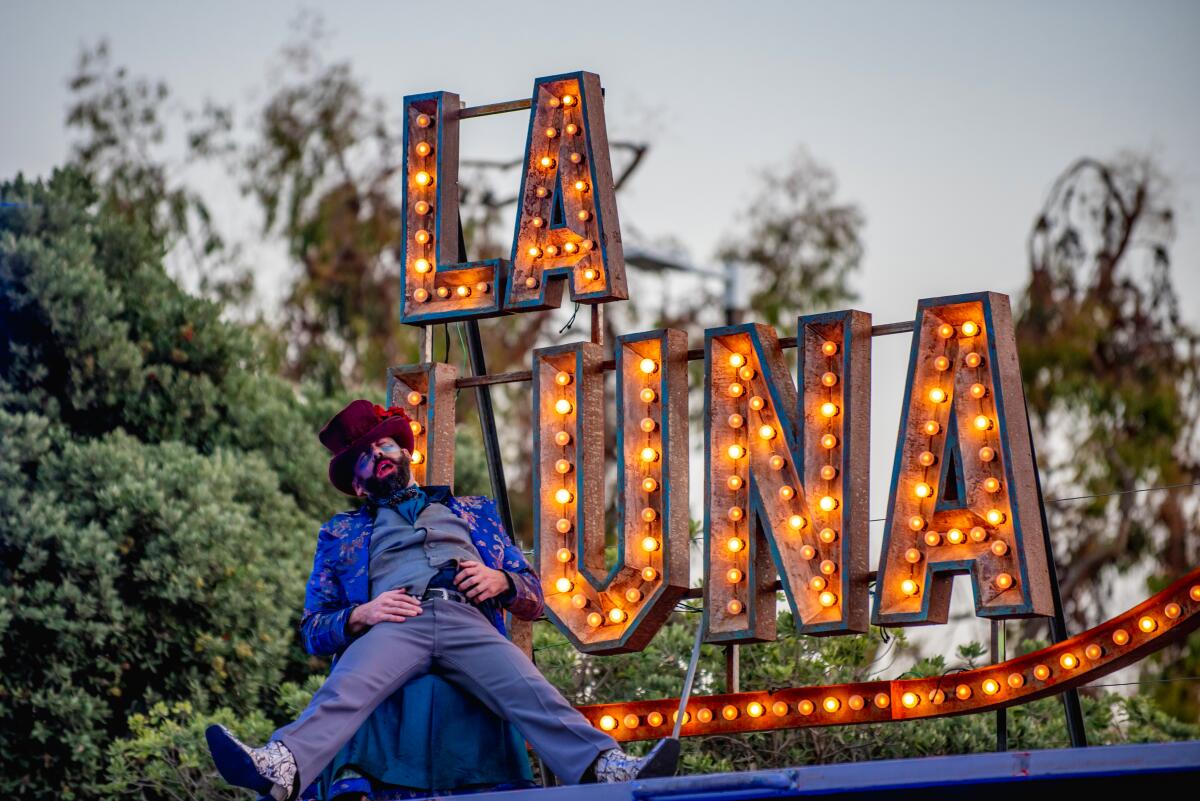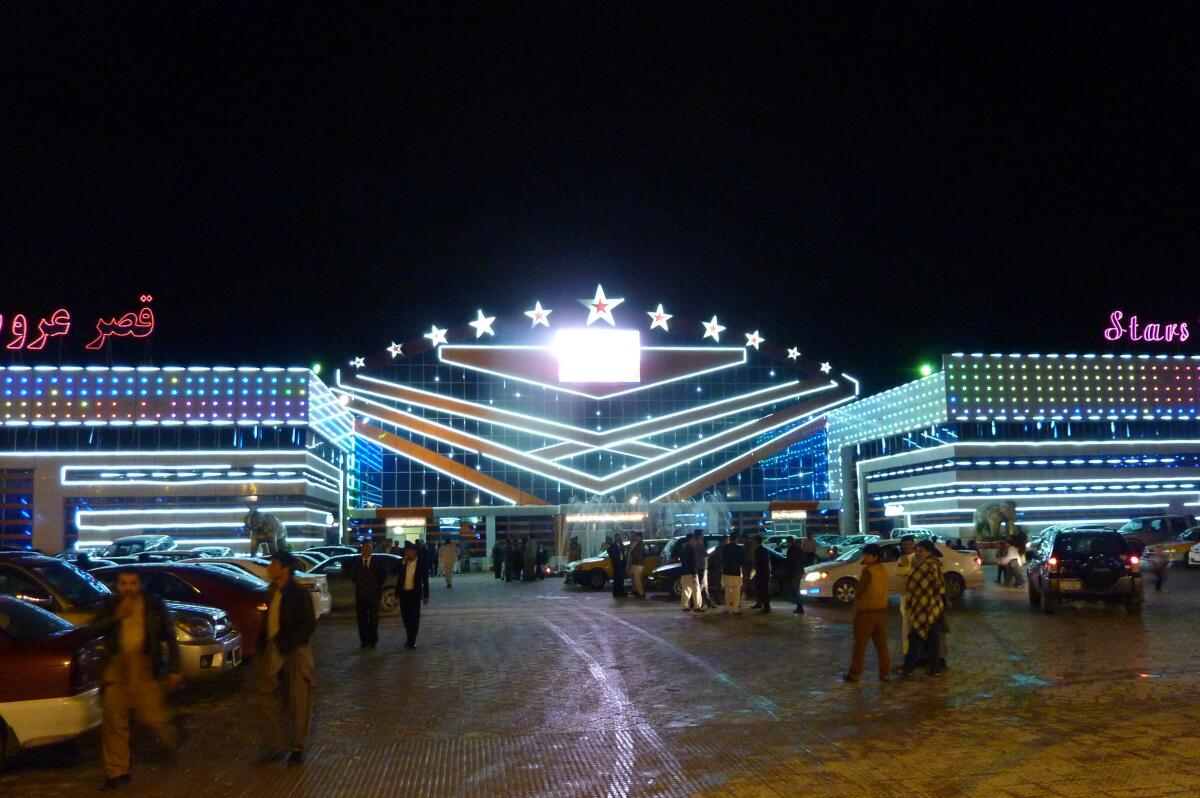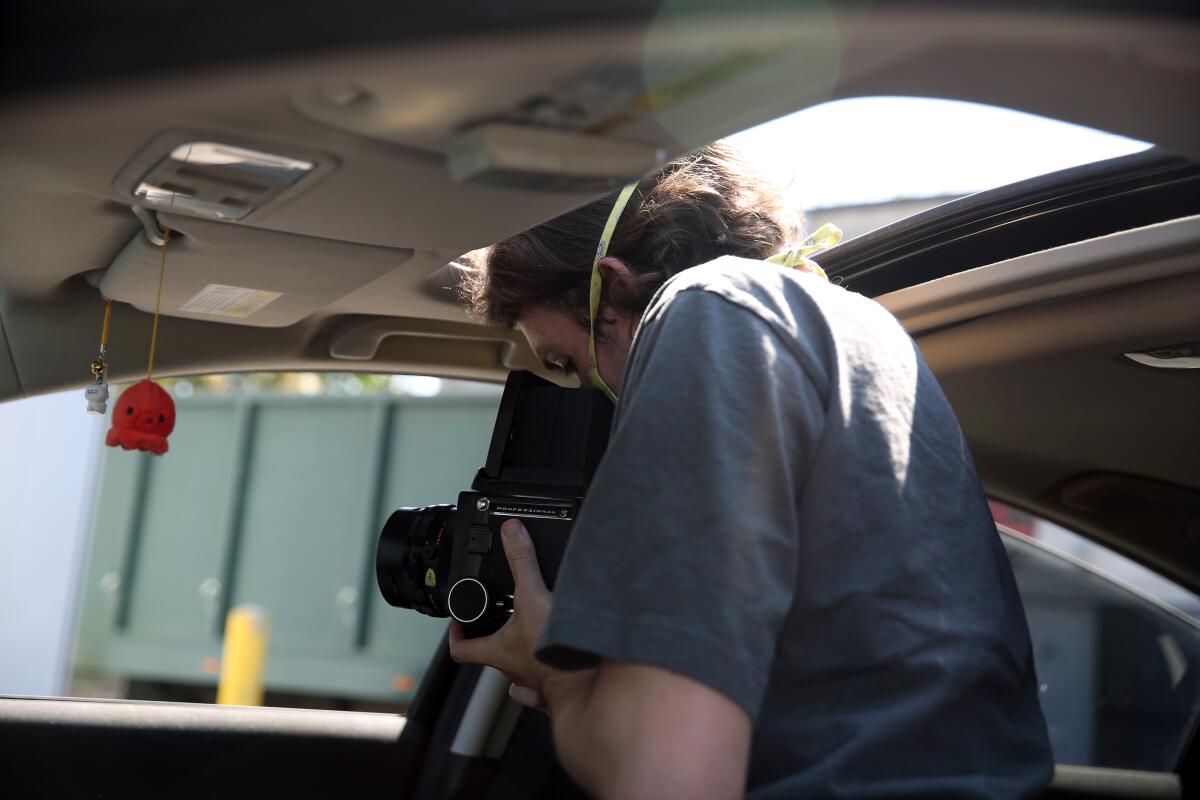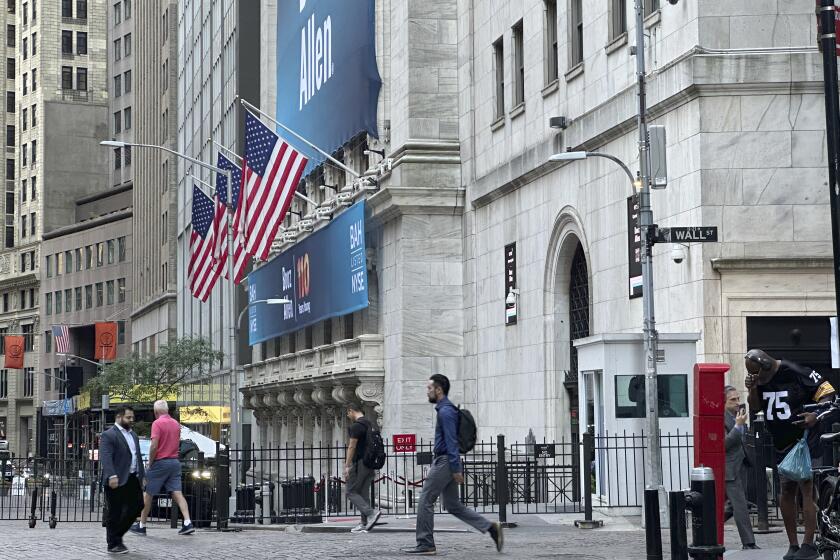Newsletter: Designing resilient cities for the era of climate change

- Share via
I’m thanking the gods of television that the latest season of “What We Do in the Shadows” began Thursday night on FX because it’s a needed escape from all the terrible headlines. Take me away, Nadja, lady vampire who is so totally over having to contend with centuries of male nitwits. I’m Carolina A. Miranda, arts and urban design columnist, and I’m here with all the culture news.
The design of climate change
When it comes to our ongoing climate emergency, it’s been a bad week. California’s Caldor Fire triggered mass evacuations around Lake Tahoe. In the Gulf of Mexico, Hurricane Ida, one of the most powerful hurricanes to to hit the U.S. mainland, flooded coastal towns, trapped residents and devastated the power grid in Louisiana and Mississippi — damage that could take weeks to repair.
Downgraded to a tropical storm, Ida then proceeded to wreak havoc on the Northeast, prompting New York City to issue its first flash-flood warning. The internet was soon filled with images of geysers in subway stations and submerged cars on a Bronx highway. As of Friday afternoon, the storm had killed at least 43 people in four Northeastern states, including many who found themselves trapped in basement apartments.
The perfect illustration of the problem? A photo by Matt Rourke of the Associated Press, which shows a pair of Sunoco gas pumps sitting in flood water in Philadelphia. It is, after all, greenhouse gas emissions that have led us to our current climate catastrophe.

And it’s not going to get better. The dire U.N. climate report issued last month notes that the damage caused by the greenhouses gases humans have already pumped into the atmosphere will be “irreversible” for centuries, even if emissions are drastically cut this very minute.
Which means that we face a lifetime of extreme weather, something for which many cities (though not nearly enough) have begun to actively plan and design.
In cities like New Orleans and New York, this has meant designing transit and other systems to be more resilient to flooding. In other locales, it has meant contending with drought and extreme heat.
The Greek city of Athens has appointed a “Chief Heat Officer” to look at holistic ways that the city can begin to battle the heat island effect and keep residents cool on days of extreme heat. And earlier this year, municipal officials in the famously hot Arizona city of Phoenix proposed the creation of a new Office of Heat and Response Mitigation that would include a Tree and Shade Administrator to help the city increase its shade canopy.
Bloomberg published an informative report late last month on how cities around the globe are adapting to extreme heat, including the design of green roofs, more shaded walkways and the use of permeable pavers (which allow the ground and any attendant vegetation to better absorb rain).
Make the most of L.A.
Get our guide to events and happenings in the SoCal arts scene. In your inbox once a week.
You may occasionally receive promotional content from the Los Angeles Times.
In Los Angeles, Mayor Eric Garcetti launched the city’s first Climate Emergency Mobilization Office in January, with Marta Segura as its director. That office emerged from the city’s first Sustainable City pLAn, developed in 2015 and updated four years later. Among other things, the plan outlines goals for water use and emissions reductions. It has also laid out requirements for tree planting and tested out design solutions such as cool pavement, which is more reflective than asphalt and therefore less heat absorbent.
But even in forward-thinking places such as California, there is much more to be done. As The Times editorial board noted in an editorial published last month, “there are 16 state departments with some responsibility for heat-related issues, but there’s not enough communication and coordination across these agencies or a focus on results.”
Welcome to the new millennium’s greatest design challenge.
Knight: 1 / MOCA: 0
The Museum of Contemporary Art Los Angeles over the last dozen or so years has been a continuous source of headlines. Now, it seems to be a source of lessons about how not to do public relations. Times art critic Christopher Knight reports on the onerous embargo terms the museum emailed to journalists about its impending announcement of a new director. “The message ranks right up there with the weirdest institutional transmissions I’ve received in 40 years as a journalist,” he writes. “Paranoia was the operating motif.”
Oh, speaking of which, MOCA has a new executive director: Johanna Burton, of the Wexner Center for the Arts at Ohio State University. She will become MOCA’s executive director and Klaus Biesenbach will shift to artistic director. How will this work out logistically? Good question. As Deborah Vankin notes, Biesenbach will have the title of artistic director “but the curatorial staff will report to Burton.”
May the odds be ever in their favor!

On the stage
Mark Grey’s “Birds in the Moon,” which features a libretto by Júlia Canosa i Serra, had its West Coast premiere courtesy of the Broad Stage, marking the organization’s return to live performance after 18 months. The stage consisted of a shipping container set up in a downtown Santa Monica parking lot and the opera, a 70-minute work for an actor, singer and string quartet, was inspired by Charles Morton, a 17th century scientist who once posited that birds migrate to the moon. The setting may be improvised, but as classical music critic Mark Swed reports, the show is “very sophisticated artistically and technically.”

After 17 months, theater critic Charles McNulty returned to the room where it happens: yep, the theater. And yep, that’d be “Hamilton” at the Hollywood Pantages, whose run was interrupted by the pandemic. The experience was part jitters — mainly from being in a crowded theater amid that other national tour, the Delta variant — and part thrills. “The high level of the show, preserving the kinetic magic of Thomas Kail’s direction and Andy Blankenbuehler’s choreography, helped assuage the tension,” he writes. “I was almost surprised by how good it was.”
Plus, the musicals “Waitress” and “Hadestown” have returned to Broadway. “Audiences were extremely enthusiastic after months away,” writes the New York Times’ Michael Paulson. “At ‘Waitress,’ there was even a standing ovation for a recorded preshow announcement reminding people to keep their masks on.”
Art report
Planners for Destination Crenshaw, the cultural corridor that will surround Metro’s soon-to-open Crenshaw line for a 1.3-mile stretch in South L.A., started naming names: the artists who will be creating site-specific works for the project. It’s an all-star line-up that includes Kehinde Wiley, Alison Saar, Maren Hassinger, Melvin Edwards, Artis Lane, Charles Dickson and Brenna Youngblood. Deborah Vankin and Makeda Easter have all the deets.
Enjoying this newsletter? Consider subscribing to the Los Angeles Times
Your support helps us deliver the news that matters most. Become a subscriber.
Easter has since left The Times to freelance, and we are going to miss her too darn much. But you can always follow her and her work on Twitter at @makedaeaster.
Art and Afghanistan
The war in Afghanistan lasted two decades. But, culturally, it hasn’t made much of a blip in the United States. I have a look at how the art world’s view of Afghanistan has been shaped (largely by Western artists) and how contemporary Afghan artists have been featured (and not) in the West. The short of it: It’s time to present a much more nuanced picture of Afghan culture in U.S. As Bay Area-based artist Gazelle Samizay says: “Tell the complicated story.”
On a side note, I went down an absolute rabbit hole doing research on this story, which included a wildly informative conversation with Afghan curator Muhab Esmat, who is based in New York. One of the narratives that emerged as Kabul fell, was how much the city had changed since the last time the Taliban rolled in. This was a topic that Esmat had presciently covered in a piece for the cultural journal Khabar Keslan earlier this year.
In it, he wrote about the wave of post-Taliban architecture that had materialized in Kabul during the occupation. These are buildings that mix wild color, intense decorative flourish and a world of architectural styles (from the Islamic to the Soviet) and put them all in the Postmodernism blender. A fascinating piece!

Plus, there is an engrossing interview with artist Khadim Ali (one of the artists I feature in the story) on the Australian podcast “The Art Show.” The journeys that have shaped Ali’s art and life are downright cinematic, including fleeing to Iran to avoid being recruited by Al Qaeda, where he survived by painting propaganda murals. Plus, there’s the time he lost his studio in Pakistan to a suicide bomber. This is a must-listen.
I also really enjoyed this essay by Mujib Mashal, who took a walk around Kabul the day the city fell to the Taliban. A poignant piece.
Philip Kennicott of the Washington Post has a look at the cultural organizations still on the ground in Afghanistan, as well as the artists that remain, and asks whether this might be the group that offers resistance to Taliban rule.
The organization Voices of Afghan Women is making a selection of films available for free through Sept. 12.
Essential happenings
Matt Cooper has the best events for Labor Day weekend, including a performance led by “Star Wars” composer John Williams at the Hollywood Bowl and a show by Pink Martini at the Segerstrom.
A year ago, I wrote about L.A. photographer Ian Byers-Gamber’s pandemic portrait series, in which he captured images of artists and other cultural workers from his car. Well, the entire series is on view virtually courtesy of the University Art Gallery at Cal State Dominguez Hills. An online reception will be held Sept. 8 at 7 p.m.

Passages
Mikis Theodorakis, the Greek composer who produced the indelible soundtracks for films such as “Serpico” and “Zorba the Greek,” has died at 96.
Micki Grant, a Tony Award-nominated composer and lyricist who brought Black voices to Broadway with “Don’t Bother Me, I Can’t Cope,” for which she wrote the book, the music and the lyrics ‚ has died at 92.
In other news
— Maggie Nelson‘s reading list.
— On housing the unhoused: My colleagues Doug Smith and Benjamin Oreskes analyze what worked and what didn’t about Project Roomkey.
— San Diego’s Mingei International Museum has received an architectural refresh courtesy of Luce et Studio. The New York Times’ Pilar Viladas reports that the renovation honors materials and craft.
— Fusing hip-hop, Chinese street culture and pop from all over, “Street Dance China” is definitely the TV show I need right now.
— Dancer and choreographer Francesca Harper has been named the new artistic director for Ailey II at Alvin Ailey American Dance Theater.
— Black Lives Matter co-founder Patrisse Cullors has joined the L.A. County Arts Commission.
— The L.A.-based landscape design firm Studio-MLA has just nabbed a 2021 National Design Award.
— The Huntington Library has named Yinshi Lerman-Tan as the new associate curator of American art. She joins the museum from the San Antonio Museum of Art.
— Plus, the Huntington has opened a new gallery devoted to Chinese art.
— The Alcatraz Indians of All Tribes committee is circulating a demand for a permanent cultural complex on Alcatraz Island that would include an official designation of the island as being Ohlone territory and the hiring of two Native American curators to steward the space.
— Definitely read Hrag Vartanian’s visually annotated review of the Kaws show at the Brooklyn Museum.
— Sort of related: I enjoyed Vartanian’s podcast interview with painter Audrey Flack, an artist whose work straddled Ab-Ex and photorealism.
And last but not least ...
I am deeply into the profoundly surreal qualities of the Auspicious Items Horoscope Robot on Twitter.
The biggest entertainment stories
Get our big stories about Hollywood, film, television, music, arts, culture and more right in your inbox as soon as they publish.
You may occasionally receive promotional content from the Los Angeles Times.



